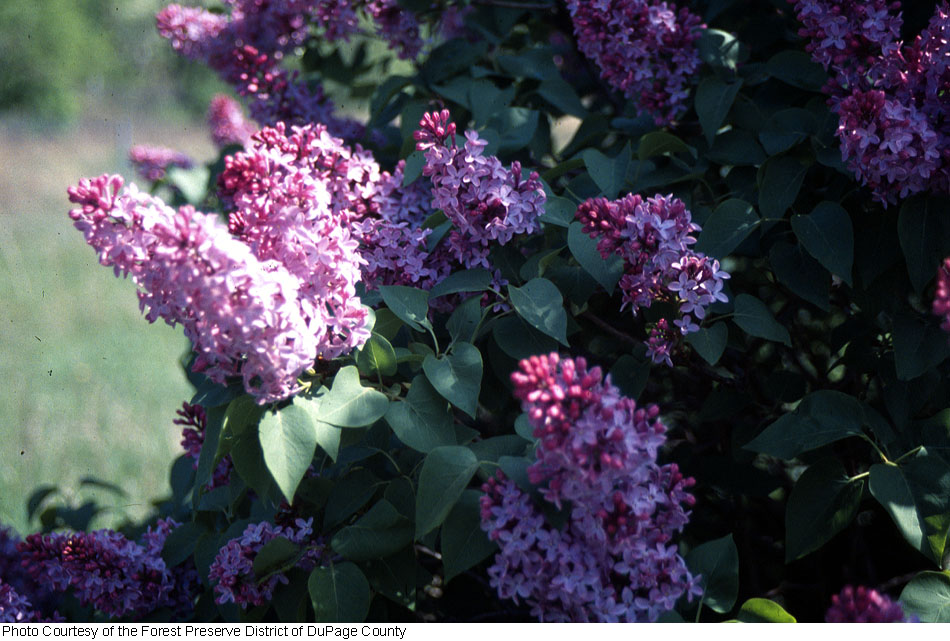|
|
|
|
Family: Oleaceae
common lilac
|
Shrub or small tree 2.5 - 7 m tall, 2 - 4 m wide Leaves: opposite, stalked, dark green to almost bluish green, 5 - 12 cm long, to as wide, egg-shaped or broadly egg-shaped with a flat or heart-shaped to broadly tapering base and pointed tip. Flowers: borne in a 10 - 20 cm long, branched inflorescence, lilac, about 1 cm long, tubular, four-lobed, and very fragrant. Fruit: a two-chambered beaked capsule that splits open to release seed, 1 - 1.5 cm long. Twigs: stout, angled, appearing four-sided during the first year, shiny brown, with small raised lenticels. Leaf scars raised and crescent-shaped. Pith solid and white. Buds: reddish brown, 1.5 - 3 mm long, and egg-shaped. Terminal buds in pairs, reddish brown, 6 - 8 mm long, egg-shaped, plump, somewhat four-sided, with overlapping scales. Form: upright and leggy with an irregular shape. Similar species: While Syringa vulgaris can reach a height of about 7 meters, S. velutina will only grow to about 3 meters tall. Also, the leaves of S. velutina are usually densely hairy on the lower surface. Flowering: May Habitat and ecology: Introduced from Europe. Often planted as an ornamental. Many of the mapped records are based on plants that have persisted after homesite abandonment. A few plants were found growing in sandy soils near Lake Michigan. In general, Syringa species thrive best in moist soils. Occurence in the Chicago region: non-native Notes: There are about 800 different cultivars known to come from Syringa vulgaris. Etymology: Syringa means lilac. It derives from the Greek word syrinx (pipe), and refers to the hollow stems. Vulgaris means common. Author: The Morton Arboretum Shrub to 6 m; lvs ovate, 5-10 cm, short-acuminate, truncate to cordate at base; infls 1-2 dm; cor lilac (white), 1 cm wide; 2n=44-48. Native of se. Europe, persisting indefinitely after cult. and often appearing spontaneous, especially in regions of abandoned farms. May. Gleason, Henry A. & Cronquist, Arthur J. 1991. Manual of vascular plants of northeastern United States and adjacent Canada. lxxv + 910 pp. ©The New York Botanical Garden. All rights reserved. Used by permission. |
|
|
|


